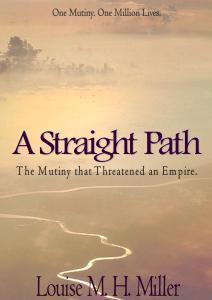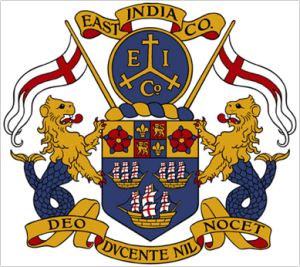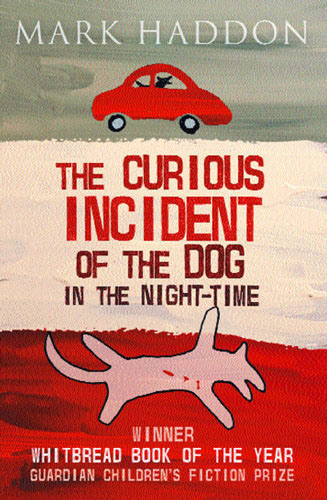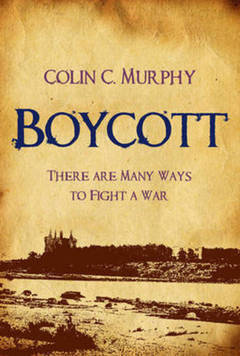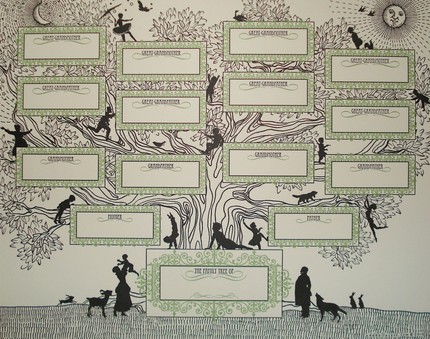Louise M.H. Miller's Blog, page 20
February 18, 2013
From the day we arrive on the planet…
You can find life lessons everywhere. You only need to look for them.
After recently re-watching Disney’s The Lion King I listened carefully to the lyrics to The Circle of Life. And the words moved me. It has always been said and often goes without saying that children’s programmes and films are filled with lessons to draw upon in life; trust in your friends, be nice, always try to do the right thing…. But as an adult we can often take the words and these lesson for granted. So, as an adult and re-listening to these lyrics I found that they summed up life pretty well. I’ve posted the transcript of the lyrics below for you to read through and hopefully you’ll see what I mean.
Life is what you make it. Sometimes bad things happen and sometimes good things happen, but all the good and the bad is all part of life. There’s no point fighting it, but equally there’s no point giving up either. The first stanza, for me, basically says that this world is too complex, there’s too much to see and do, too much knowledge in the whole world, past, present and future, to worry about it all, and you shouldn’t worry about it all.
The Circle of Life - life is cyclical. Bad times. Good times. Birth. Life. Death. All we need to do is find our place in it. This place is our own, it doesn’t need to be earth shattering. Just ours. Simply ours.
With all the books and advice on how to live our lives to the fullest, how to see through the bad times, and move forward to the good times, maybe all we need is the simplicity of children’s films. Whether it be Disney or Pixar or any other. Because the life lessons are always there, in uncomplicated and innocent words, if you look for them.
The Circle of Life
Music by Elton John; Lyrics by Tim Rice.
From the day we arrive on the planet
And blinking, step into the sun
There’s more to see than can ever be seen
More to do than can ever be done
There’s far too much to take in here
More to find than can ever be found
But the sun rolling high
Through the sapphire sky
Keeps great and small on the endless round
It’s the Circle of Life
And it moves us all
Through despair and hope
Through faith and love
Till we find our place
On the path unwinding
In the Circle
The Circle of Life
It’s the Circle of Life
And it moves us all
Through despair and hope
Through faith and love
Till we find our place
On the path unwinding
In the Circle
The Circle of Life
Filed under: Uncategorized Tagged: children's films, children's programmes, disney, life lessons, philosophy, self-help, the circle of life, the lion king


February 15, 2013
I’m happy to announce…
etc….
India. 1857. Anne Greene lives an ordered life. She is a wife and a mother. But she harbours a deep secret that would crush her family – she has a lover. Her life is thrown into chaos and her secrets are in jeopardy when Mutiny breaks out over Northern India.
On the dawn of Mutiny Karim, an idealistic soldier, witnesses the punishment of his fellow sepoys and joins the uprising which erupts around him and fights against the British for personal and national retribution.
Both of their lives are worlds apart, but each are forced upon a path set before them by the Mutiny.
Can Anne, Karim and India survive the turmoil of Mutiny?
Filed under: Uncategorized Tagged: 1857, A Straight Path, amazon, historical, India, Kindle, mutiny, self-publish


February 13, 2013
Stepping into the world of A Straight Path
With only two more days until the publication and release of my debut novel A Straight Path this coming Friday. I’m busy finalising everything and battling with any lasting paranoia that lingers prompting me to fret whether I’ve got everything done and dusted. That the i’s are all dotted and the t’s all crossed. Now I thought I’d welcome you into my world and to the world of A Straight Path, my story.
A while ago I posted a family-tree of the main characters of the main family featured in the novel – the Greene family and now’s the time to get a better feel for them.* Warning may contain spoilers! *
With just a few pics thrown in for viewing pleasure.
Anne Greene
As a wife and a mother she couldn’t be happier. She has four healthy and happy children and four grandchildren. She is married to a good man who loves her and who would never hurt her. But as a woman she is lost. She loves and cares deeply for her husband, but she is not in love with him. Somewhere down the line, love either disappeared or was never really there to begin with. Anne never felt comfortable with the all-encompassing, full-hearted, can’t-live-without-you love. She was a sensible girl who turned into a sensible woman and she was content to be so. But after years of being constantly belittled by the dreaded Aunt Margaret, her sister-in-law, who for her, Anne could never do anything right, she welcomes the attention reaped upon her by the exotic and handsome servant Manik. She gives into temptation and succumbs to her baser needs and desires. She splits her life in two. The first as a wife and mother, sister and home-maker. The second as a lover. It is here where the story really begins. It is these two separate lives that Anne must learn to balance or risk merging the two with potentially disastrous consequences. The Mutiny spells trouble for her ordered life.
My initial inspiration for Anne’s character was after reading countless stories in novels and watching them unfold on the screen, was that the wife has to be ‘trapped in a loveless marriage, doomed by her husband’s violence and forced to live in fear of her safety and her sanity….and so on’. And while people don’t – generally – seek out affairs when their relationships are happy, I wondered why they always had to be trapped in a usually violent or demeaning relationship. Anne respects and cares for her husband, she loves him as a friend and companion and is generally happy with him. He has given her a happy, stable life and four wonderful children. But there’s a fire in Anne’s heart that cannot be quelled by George.
[The Relief of Lucknow]
James Young
James is not mentioned in the blurb but is an equally key figure. He is the husband of Anne’s eldest daughter Georgina and a captain in the EIC (East India Company) army. His duties have recently seen him fighting against the Chinese in the First Opium War and upon his return to India is working his way through the ranks of the British army overseeing part of the infantry in Agra, when the Mutiny breaks out and he is called to duty to quell the rebels. He is a family man whose views are, on the whole, liberal and this reflects how I wrote him with his dealings with the rebels during the Mutiny.
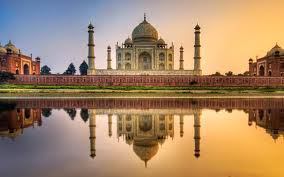
The Rest of the Greene family…
George Greene
Retired army officer and fledging businessman during his retirement. He spends his hours mostly at his leisure, in his study amongst his books and his ledgers, at the Club discussing politics and brandy with other ‘gentlemen’ or engaged in other leisure pursuits like shooting or tiger hunting. His leisure hours are spent away from the company of his wife. Both their times are perfectly in tune, if not spent together.
Georgina Young
Anne and George’s eldest child and daughter. Wife of James. Mother of Isabelle and Elizabeth.
Julia Ferguson
Anne’s second child. Married to Edward. Mother of twins.
Henry Greene
Anne’s third child and eldest son. Self-determined bachelor. Bookworm. Lay-about. Indecisive. Know it all.
Charles Greene
The youngest child and youngest son. Tarred with the ‘baby of the family’ brush. Determined to become a man, while still grappling with the continued presence of youth.
Aunt Margaret
George’s sister. Spinster. Somewhat bitter and slighting. Believes she has the family’s best interests at heart. Sometimes cold and cruel.
[East India Company seal]
Karim
Is an Indian sepoy soldier. He has long-held animosities against the British, as many Bengal sepoys did at the time and before the Mutiny. Stationed near Meerut when the Mutiny breaks out. He holds animosities for personal reasons (which are revealed in the novel and not here – no spoilers here), and obviously national anger for many reasons including lack of promotion opportunities, fear of possible Christianisation and the British bringing the final end of the Mughal Empire (even though coming to an end in itself). He is a brave and skilled warrior whose heart is most definitely in the right place. His animosities held for the British do little to highlight Karim’s national pride and sense of honour that is ingrained into his very being. Throughout the Mutiny, Karim finds himself battling with demons from his past and from his actions in the present. He is a good man. Brave, loyal, passionate, nationalistic, troubled and filled with self-doubt.
Filed under: Uncategorized Tagged: A Straight Path, character profiles, East India Company, historical fiction, indian mutiny, self-publish


February 11, 2013
Timeline of the Indian Mutiny
Jan – rumours begin to circulate at the Dum Dum musketry depot, over the greased cartridges of the new Enfield rifle.
26th Feb – Sepoys of the 19th Native Infantry at Berhampore refuse rifle practice.
31st March – the 19th Native Infantry is disbanded in an attempt to dispel any chance of an uprising.
24th April – Troopers of the 3rd Bengal Light Cavalry at Meerut refuse their orders to fire the controversial ‘greased’ cartridges.
6th May – Part of the 34th Native Infantry are disbanded at Barrackpore.
8th May – Troops of the 3rd Bengal Light Cavalry are founded guilty by court-martial for their refusal to follow orders over the greased cartridge issue and are given severe sentences.
10th May – The Mutiny breaks out and erupts starting at Meerut. The troops head towards Delhi.
11th May – Europeans and Christians are slaughtered at Delhi.
13th May – after initially refusing to join to lead them, Bahadur Shah II is proclaimed the new Mughal emperor, in an attempt to restore the old Mughal order in India. Also, in Lahore, the British disarm the garrison there.
17th May – The Delhi Field Force advances from Ambala, under the command of George Anson.
22nd May – The Peshawar garrison is disarmed.
20-23rd May – At Agra, part of the 9th Native Infantry mutiny.
27th May – George Anson dies of cholera and is replaced by Major-General Sir Henry Barnard.
30th May – Further mutinies occur at Muttra and Lucknow.
31st May – Further mutinies occur at Rohikhand and Bhurtpore (the Army rather than the infantry).
5th June – The 2nd Cavalry mutinies occur at Cawnpore.
6th June – The Cawnpore siege begins. A Mutiny occurs at Allahabad.
8th June – The battle of Badli-ki-Serai. A massacre at Jhansi.
25th June – Nana Sahib offers terms of surrender at Cawnpore, offering safe passage to the surviving Europeans to flee to Allahabad.
30th June – The British are defeated at Chinhat and the Lucknow Residency is besieged.
1st July – A further mutiny occurs at Indore.
4th July – Sir Henry Lawrence dies at Lucknow.
5th July – General Barnard dies of cholera and is succeeded by Major-General Thomas Reed as commander of the Delhi Field Force.
7th July – Havelock’s force prepare to leave for Cawnpore.
7th July – European women and children are massacred at Bibighar at Cawnpore.
12th July – Brigadier-General Sir Henry Havelock and his forces defeats rebels at Fatehpur en route to Cawnpore.
15th July – Havelock’s forces defeats rebels at Aong and Pandu Nadi, near Cawnpore.
16th July – Nana Sahib is defeated in the first battle for Cawnpore.
17th July – Sir Archdale Wilson replaces the ailing Reed as commander of the Delhi Field Force.
27th July – Havelock’s forces enjoy another victory against the rebels at Unao.
31st July – Lord Canning issues his controversial ‘Clemency’ resolution stating against the execution of mutineers not convicted of murder.
5th August – Havelock’s victory at Bashiratganj.
13th August – Havelock withdraws his forces to Cawnpore. Colin Campbell, Anson’s successor as Commander-in-Chief of India arrives at Calcutta.
14th August – John Nicholson arrives at Delhi Ridge.
16th August – Havelock’s victory at Bithur.
17th August – Major William Hobson and his forces defeat a large body of rebels near Rohtak.
5th September – Sir James Outram arrives at Cawnpore.
14th September – The British assault on Delhi begins to return the city to British control. Nicholson is wounded.
19th September – Havelock and Outram march to Lucknow.
20th September – The siege against Delhi finally comes to an end after bitter street fighting. The British capture Delhi and cleared of the remaining rebel troops.
21st September – William Hodson captures the King of Delhi.
22nd September – Hodson executes the remaining Mughal princes.
23rd September – Nicholson finally succumbs and dies of his wounds.
25th September – The first relief of Lucknow begins.
10th October – The mutineers at Agra are defeated.
14-17th November – The second relief of Lucknow is undertaken by Colin Campbell.
19th November – Women and children are evacuated from Lucknow.
22nd November – The remaining British withdraw from Lucknow.
24th November – Havelock dies of dysentery.
26-28th November – After successive victories the British forced are temporarily set back when Windham is defeated at the second battle of Cawnpore.
28-30th November – Campbell reaches Cawnpore to join and support Windham.
6th December – Tatya Tope is defeated at the third battle of Cawnpore.
1858
6th January – Campbell reoccupies Fategarh.
16th January – Hugh Rose begins his campaign in Central India, the last real stronghold held by the rebels.
February – Campbell opens a separate campaign for the reconquest of Oudh from rebel control.
3rd February – Rose relieves Saugor after a 7-month long siege.
2nd March – Campbell returns to Lucknow.
1st April – En route to Jhansi, Rose learns that a rebel band under Tantia Topi is nearby the River Betwa and decides to divide his troops engage Topi. Rose defeats a numerically superior army.
3rd April – Jhansi is captures and sacked. The Rani of Jhansi flees.
15th April – Walpole is defeated at Ruiya.
23rd April – Rose enters Kalpi.
5th May – Campbells’ victory at Bareilly.
7th May – Rose defeats a large rebel force at Kunch under the command of Topi and the Rani of Jhansi.
22nd May – A British victory, under Rose, at Kalpi. The End f operations in Rohilkhand. The start of guerrilla warfare.
28th May – Rao Sahib, Topi and the Rani of Jhansi and the Nawab of Banda enter Gwalior with the rest of their force and seize Gwalior on 1st June.
12th June – James Hope Grant wins at Nawabganj in the final decisive battle in Oudh.
17th June – The Battle of Kotah-ki-Serai takes place, where the Rani of Jhansi dies.
19th June – The Battle of Gwalior.
2nd August – Queen Victoria approves a bill which transfers the administration of India from the English East India Company to the Crown, effectively beginning the Crown’s direct rule of India, under the British Raj.
1st November – Royal Proclamation replacing the East India Company with British Government and offering unconditional pardon to all not involved in the murder or the protections of murderers during the Mutiny.
1859
4th January – Various leaders from Oudh, including Nana Sahib are forced into the Nepal Terai by Hope Grant.
7th January – The operations in Oudh are officially declared over.
29th March – Bahadur Shah is found guilty.
7th April – Topi is betrayed to the British.
18th April – Topi is executed.
Filed under: Uncategorized Tagged: historical fiction, history, indian mutiny, timeline


February 6, 2013
The Curious Incident of the Dog in the Night-Time – Review
This a murder mystery novel.
Siobhan said that I should write something I would want to read myself. Mostly I read books about science and maths. I do not like proper novels. In proper novels people say things like, ‘I am veined with iron, with silver and with streaks of common mud. I cannot contract into the firm fist which those clench who do not depend on stimulus.’ What does this mean? I do not know. Nor does Father. Nor do Siobhan or Mr Jeavons. I have asked them.
This is a murder mystery novel with a difference.
Reading The Curious Incident of the Dog in the Night-Time was a new experience for me. I haven’t read a book like it before. It tells the story wonderfully simply but is so full of life and drama that it keeps you enthralled and unable to put it down (notice I’m not using the word ‘unputdownable’ – the word annoys me for some reason – but that’s a different story).
It’s one of those books that had sat on my ‘reading list’ for years now and I have finally got around to reading it. It is a wonderful novel and I truly recommend it. It’s out of the ordinary. It doesn’t use fancy words or phrases but it is it’s simplicity that make it work and makes the novel a fascinating one.
The tone is wonderful throughout and as true to life as I can imagine it to be following the life of 15 year old Christopher who has Asperger’s Syndrome. The novel is a breath of fresh air and in my reading experience, wonderfully unique.
It’s a sort of coming-of-age story with a difference where a young man struggles to find sense in a world which confuses and scares him.
The story, its tone and characterizations are innovative and thought-provoking. It opens the mind and for a brief moment in time lets you see into the mind and life of someone like Christopher.
Simply brilliant.
Filed under: Uncategorized Tagged: Asperger's Syndrome, book review, children's books, Mark Haddon, The Curious Incident of the dog in the Night-Time


February 4, 2013
A Straight Path Family Tree
In amongst the final edits and checks throughs and formatting for my forthcoming publication of my debut novel A Straight Path, I thought I’d welcome you to the world of the characters, the settings and the stories over the next week or two, before and after my novel’s release.
Without further ado, here’s a family tree of the main family in my story, which is centred around the central character of Anne Greene, nee Smith (in the centre)…..
Filed under: Uncategorized Tagged: A Straight Path, family tree, historical fiction, novel debut, self-publish


January 24, 2013
Front cover – take two
After putting up my initial front cover for my forthcoming debut A Straight Path on to this blog, and after asking around people I know, I have decided, after listening to the comments made, to re-do the first front cover and try something completely new.
And without further ado…
…here it is….
….what do you think?
Filed under: Uncategorized Tagged: front cover, self-pub, self-publish, writing


January 16, 2013
Boycott – Colin C Murphy – Review
‘Boycott – a word whose meaning is known the world over. But it once belonged to a man.’
A true historical novel. It is well researched with telling and poignant primary sources to really illustrate the history. I thought the use of primary sources worked well to highlight the plight of the Irish and the contemporary thoughts, feelings and attitudes of both sides. You really can tell that he knows his stuff. It is meticulously researched throughout without inhibiting upon the literary creationism of the novel.
It is a very poignant tale. The historical realism is played out nicely throughout with vivid imagination, thought and process.
The novel tells the story of two brothers living during the beginnings of the call for an independent Ireland, independent from the British Empire and who have lived through the devastating history of the Irish plight of the potato famine. It is a simple tale of two brothers, and all that is left of their family. They are two brothers whose temperaments and life philosophies draw them apart. The story is set against the backdrop of the turbulent days/years in Irish history which culminates in the creation of a political weapon – boycott. In the attempt to banish landlordism from their lives and seek vengeance for the wrongs done to them during their lives, the two brothers seek very different approaches to meet the same end; to banish landlordism and ultimately the British from their lands. One seeks to use the threat of boycott; the other takes the violent road. It is set in a point in history where the course of non-violence and boycott is the more moral and historically more successful device. (Evidenced too by the civil disobedience movement led by Mahatma Gandhi in India).
At the start of the novel the story switches from past to ‘present’ (from the characters point of view) which eases you into the story and shows the differences in experiences and temperament of the two brothers, which comes to a head later on in the story.
The novel is extremely historically significant and emotive. The plight of the famine and landlordism is demonstrated clearly and emotively – it beggars belief that these things were allowed to happen. But sadly they did. And the novel demonstrates the emotive history well by managing to create strong sympathies with the characters.
This is how history should be taught, not as a series of dates, numbers and emotionless facts but tales of the real humanity of history good and bad, so that the consequences of the facts sink in deeper and are perhaps a little easier to digest and debate.
I perhaps found the novel a touch lengthy while reading but when you are finished it is well worth the effort. Despite the length, it was still gripping from the beginning to the end. I feel the novel does well to not exclude victims on the British side as well, avoiding the risk of bias which given the topic could easily be fallen into.
Filed under: Uncategorized Tagged: Boycott, Colin C Murohy, Colin Murphy, Ireland, Irish history, landlordism, potato famine


January 14, 2013
Tracing my ancestors
I’ve recently begun to draw up my family tree. And it’s a lot harder than it’s made out to be. It’s proving to be difficult to verify something that could be part of your family history but no one is alive to tell you that you’re on the right track.
You can cross reference through all the births, marriage and death indexes and through all the census records (up to 1911 – and that’s where the problem really lies) and see if they match up and no anomaly is sticking out like a sore thumb. It’s detective work, guessing using educated guesswork. I put in all the information that I have and basically hope for the best.
I’ve debated whether to search through my family tree for a while now, and don’t worry I’m not going to bore you with the details of it, because like your own dreams only interest you, only your family tree interests your family. No one really wants to know, unless of course some obscure person turns out to be a distant cousin of the Queen, Shakespeare, Sir Francis Drake or any other figure. Which I’m not. So I finally decided to look into my past. But I’m not going to go back too far. My great grandparents, or great great grandparents perhaps but just them. Otherwise I’ve found that they just end up as names on paper. My hope is to build up details about them and try to find out as much as I can from them. Who they were, where they lived and what they did for a living. Sort of build up character profiles of them as any writer would in creating a new character from scratch.
Because for me personally, that’s what I find interesting, the details of the people. I could go further and further back, but I don’t really want to. Realistically, there’s more chance of going wrong the further back I go.
I’m not expecting to find that I’m part of a long line of nobility, twice removed, or anything, with a boundless amount of wealth with my name on it, waiting to be claimed, I’m really not expecting that to happen. Don’t get me wrong it’ll be nice. But my idea of it is to explore my fairly recent past family history and create it, for future generations to add their details to. Hopefully, I’ll build up a fairly comprehensive picture of my family tree, past, present and future.
Filed under: Uncategorized Tagged: ancestors, ancestory, family tree, finding my past, writing


January 7, 2013
Write what you know. The worst advice ever?
Any budding writer who reads books and website articles about how to write will probably at some stage come across the advice: ‘write what you know’.
But this is one piece of advice that I’ve never fully agreed with and I don’t really accept it. Sure it’s generally fine if you write ‘general’ or ‘literary’ fiction, or if you’re say a teacher and you want to set your novel in a school, sure that makes sense. Draw on what you know. But make sure that if this is you, that you want to write about a school setting not because you think you should.
The same goes for if you’re a police detective or a forensic expert, knowledge from your working life would be vital if you want to write a crime, thriller or who dunnit? style novel.
And the same for an army officer. It’s sound advice if you’re writing an action adventure set in present day Afghanistan.
But what if you’re not one of these? Or you are and you want to write something else? Should the army officer stick to military action adventure novels because it’s what he/she knows? What happens if their dream is to write a sci-fi romance story? Should they let their dreams be shattered by one piece of advice?
Like the picture above nicely shows ‘write want you like‘.
The point is doubly illustrated if you are wanting to write or are currently writing or do write historical fiction novels, fantasy or sci-fi? (As well as others.)
Then unless you’re a time-traveller, have walked out of a wardrobe from some mystical land with talking animals or are from outer-space, then chances are you won’t be able to rely on the advice writer’s seem to come across everywhere – write what you know. If this is you (or similar) then this may not be the best advice for you to follow. At least not for the entire novel.
This advice may serve well in some respects but not for all of your novel. For example,
Your character is baking a cake. Any cake. It doesn’t have to matter which. It’s not going to shake up the plot of your particular story. So which cake do you decide to give the character to bake? Let’s say that you’ve never baked a battenburg cake, but you love making a carrot cake, well make the character bake a carrot cake. You know how to make one, how it smells, looks, its texture throughout the entire baking process. You draw on your own experiences for this scene.
Drawing on your experiences and what you know for snippets of details and scenes in your story may just bring that scene to life. But for the entirety of your work – nah. Write what you enjoy, what you want to and fit what you know around it – but only if it fits. Who knows what you’d have created if you had stuck to the old adage ‘write what you know’.
This advice is also flawed as people don’t know everything anyway and certainly can’t remember everything they’ve ever been told or ever read. So research is needed. Even if you’re an expert on your storyline chances are there will be something you’ll need to read up on new or to refresh your memory. Some novels won’t need much research at all, others will need loads – again the chances are that no matter what you’re writing they’ll need some.
So I think a better piece of advice would be to not be afraid of research. Research into something new becomes what you know. But don’t forget that thing called fiction. It’s artistic licence with the facts.
Remember: even the best advice is subjective – to the writer giving it (who has drawn upon his/her own experiences/method) to who it is given too. Not all advice writer’s give will work for you (excluding grammar and punctuation of course) – find what works for you.
Having said that, I think its much more important to concentrate on creating a great work of fiction rather than relying on and being limited to ‘write what you know’.
So,
I wouldn’t go as far as to say that ‘write what you know’ is bad advice, it can serve you well, but it’s extremely limiting and is definitely not the be all and end all of writing.
Filed under: Uncategorized Tagged: creative writing, fiction, writing advice, writing tips


Louise M.H. Miller's Blog
- Louise M.H. Miller's profile
- 18 followers




